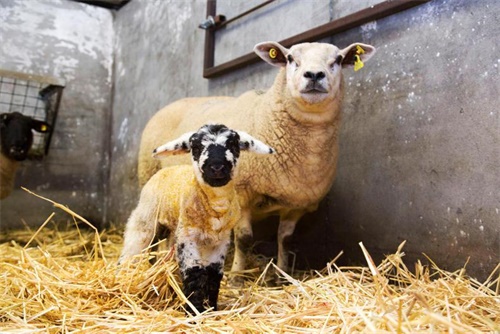Six Key Strategies to Boost Dairy Cow Milk Production Effectively
As a global dairy farmer or livestock enthusiast, maximizing milk production while maintaining animal health and welfare is essential for sustainability and profitability. Dairy cows, like any other livestock, respond strongly to environmental conditions, feed quality, and management practices. Through years of practical experience and modern dairy science—particularly from dairy-rich regions such as the Netherlands, New Zealand, and the United States—we’ve identified six crucial areas that can significantly enhance milk yield in dairy cows.

Let’s explore these strategies in detail and see how they can be implemented in both smallholder and commercial dairy operations.
1. Maintain Optimal Barn Temperature for Thermal Comfort
Temperature regulation inside the barn is one of the most overlooked, yet vital aspects of dairy farming. Research from northern Europe and North America confirms that dairy cows produce milk most efficiently when housed in environments with moderate temperatures. Specifically, the ideal range is between 8°C and 16°C (46°F to 61°F).
When temperatures drop below 0°C (32°F), cows expend more energy maintaining body heat, which reduces the energy available for milk production. Conversely, heat stress above 25°C (77°F) can drastically decrease appetite and milk yield.
To address cold conditions:
-
Seal gaps in barn walls and windows to prevent wind drafts.
-
Use thermal curtains on sun-facing windows for insulation.
-
Provide bedding such as straw or sawdust to help insulate cows from cold flooring.
In hot regions:
-
Install fans or ventilation systems.
-
Use water sprinklers during hot afternoons.
-
Shade outdoor resting and feeding areas.
Global dairy farms, from Canada to China, are increasingly investing in energy-efficient climate control systems because of their proven impact on milk productivity.
2. Improve Feed Quality and Nutritional Balance
Nutrition is the foundation of milk production. In countries like New Zealand and Denmark, where dairy efficiency is high, feeding strategies are based on precision nutrition tailored to cow physiology and seasonal changes.
In colder months, cows need more energy not only to produce milk but also to stay warm. Farmers in colder climates increase the concentrate portion of the diet by 10%–15% during winter. This compensates for energy losses from metabolism and rumen fermentation.
Feed strategies that work globally include:
-
Providing high-quality forages (such as alfalfa hay or silage).
-
Supplementing with energy-dense mixed concentrates.
-
Ensuring adequate protein (particularly rumen-degradable protein).
-
Adding live yeast cultures to improve digestion efficiency.
A cow producing 30 liters of milk per day may require up to 18–20 MJ (megajoules) of energy daily. Feed efficiency and nutrient balance are key.
Additionally, Total Mixed Ration (TMR) feeding systems, common in American and Dutch farms, ensure cows receive consistent and balanced diets in every mouthful.
3. Provide Ample Access to Clean, Warm Drinking Water
Water is the most important—and often the most neglected—nutrient. Scientific literature shows that cows need about 4–5 liters of water per liter of milk produced. A cow producing 25 liters of milk daily may drink over 100 liters of water.
Cold water intake drops significantly in winter, which in turn reduces feed intake and milk yield. According to Canadian studies, offering water warmed to 12°C–16°C (54°F–61°F) during winter increases milk yield by up to 8%.
Here’s what works:
-
Maintain drinker water temperature above freezing in winter.
-
Clean water troughs regularly to avoid algae and bacteria buildup.
-
For calves, provide warm water (35°C–38°C) to support digestion and immune function.
Modern dairy farms install heated water lines or insulated tanks to ensure constant water availability at optimal temperatures, a practice especially common in Sweden and northern U.S. states.
4. Ensure Adequate Salt and Mineral Supplementation
Salt plays a critical role in cow metabolism and digestion. It’s a core component of saliva and stomach acid, which are essential for rumen fermentation. Studies from the University of Wisconsin show that cows with insufficient salt intake experience lower feed conversion rates and reduced milk output.
In winter, when feed intake rises and digestive activity increases, cows require more sodium. For most adult cows, the recommended salt intake is 50–100 grams per day, depending on body weight and milk output.
Effective strategies include:
-
Mixing salt (at about 1% of concentrate) into daily rations.
-
Providing free-access mineralized salt blocks or loose minerals.
-
Monitoring for signs of salt deficiency: rough coat, reduced appetite, or licking behavior.
In Europe, mineralized salt licks with added selenium, zinc, and copper are commonly used to boost immunity and milk quality.
5. Encourage Physical Activity and Daily Grooming
Physical activity isn’t just for humans. Dairy cows benefit greatly from daily movement, exposure to fresh air, and sunlight. Long hours in confined barns, especially in winter, can lead to poor circulation, joint stiffness, and increased risk of mastitis and lameness.
Practices that enhance physical well-being:
-
Allow cows outside for 1–2 hours daily, even in cold weather, if conditions are safe.
-
Use rubber flooring in alleys to promote walking and hoof health.
-
Groom cows with rotating brushes or manual brushing (2–3 times per day).
Daily brushing promotes blood circulation, removes dead skin, and strengthens the immune system—benefits supported by dairy science in both Japan and Germany.
Some farms use pedometers or wearable activity monitors to track steps per day, which helps monitor herd health and reproductive cycles.
6. Prioritize Hygiene, Disease Prevention, and Biosecurity
Sanitation is the backbone of a healthy dairy herd. Pathogens thrive in wet, dirty environments, and subclinical infections—especially mastitis—can silently reduce milk yield by 10% or more per cow.
Hygiene protocols that work include:
-
Keeping barns dry and well-ventilated.
-
Using straw bedding or soft mats that absorb moisture.
-
Applying wood ash or lime powder in moist areas to control bacteria.
-
Cleaning udders before and after milking using iodine or chlorhexidine-based dips.
Regular deworming and seasonal vaccinations are critical. For example, Finnish dairy farms follow strict biosecurity plans that include isolation pens for new or sick animals and automated milking systems that reduce human contact, lowering disease transmission.
Consistent milking routines, hoof trimming, and routine body condition scoring are all part of modern herd management that contributes to high milk production.
Final Thoughts: Integrating Tradition with Modern Dairy Science
Improving milk yield in dairy cows isn’t about pushing animals to their limits. It’s about aligning biological needs with environmental conditions, sound nutrition, and compassionate care.
Across continents—from pasture-based systems in New Zealand to intensive dairy farms in the Netherlands—one truth remains clear: Healthy cows produce more milk. By focusing on these six key strategies—thermal comfort, nutritional enhancement, water management, mineral balance, physical activity, and hygiene—you can not only boost production but also improve animal welfare and farm sustainability.
The journey of increasing milk output is a blend of traditional wisdom and scientific innovation. Whether you’re managing a small herd or a commercial dairy operation, applying these practices will position your farm for success in today’s competitive agricultural world.
Reference Sources:
-
DairyNZ (New Zealand): “Feeding for Milk Production” (2023)
-
University of Wisconsin-Madison: “Dairy Nutrition Strategies” (2022)
-
Wageningen University & Research (Netherlands): “Cow Welfare and Productivity” (2021)
-
American Dairy Science Association: “Water, Feed, and Climate Impacts on Milk Yield” (2023)





